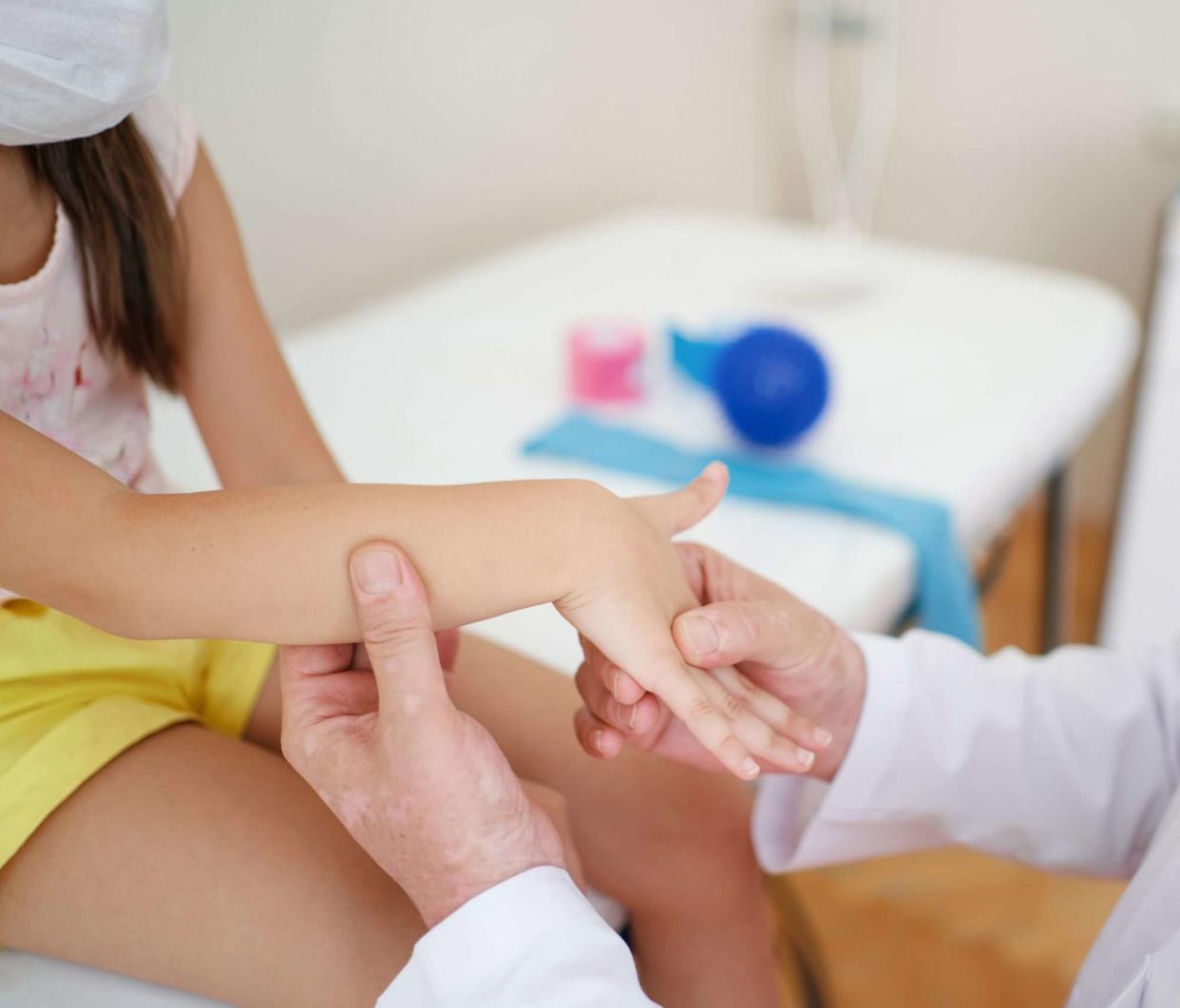What a Juvenile Arthritis Diagnosis Really Means for Kids and Parents

Getty Images.
For nineteen years I took our daughter Annierose to Boston Children's Hospital for joint taps, fever spikes, bleeding ulcers, alarmingly high liver enzymes, MRSA, and staph infections. Why? Because she has juvenile arthritis.
Juvenile arthritis, or JA, is an umbrella term for the rheumatic and inflammatory diseases that affect nearly 300,000 kids and teens in the U.S., more than the total of juvenile diabetes and cystic fibrosis cases combined. Despite so many cases of JA, it's not talked about nearly as much as other conditions.
While JA is an autoimmune disease that can last a lifetime and has no cure, children who are diagnosed, like mine, can live happy, full, and extraordinary lives. Here's what parents need to know about juvenile arthritis.
Understanding Juvenile Arthritis Symptoms
Peter Chiraseveenuprapund, M.D., a pediatric rheumatologist at Rady Children's Hospital-San Diego and associate professor of clinical pediatrics at UC San Diego School of Medicine, says the hallmark symptom of JA is joint swelling and pain. Stiffness in the morning or after sitting for awhile is also a visible sign. This is a full list of symptoms:
Pain
Stiffness
Joint swelling
Difficulty moving
Fatigue
Blurry vision or dry, gritty eyes
Rash
Appetite loss
High fever
All that said, it can be challenging for parents to recognize symptoms. We were unaware of our daughter's compensations. As a three-year-old, it was not unusual to ask to be carried. Sliding down the carpeted stairs on her bum was cute. Not using her tricycle was her choice.
But when her thumb, ankle and knee swelled, our pediatrician sent us to Children's where Annierose was diagnosed with Juvenile Idiopathic (meaning unknown) Arthritis. Watching our active little daughter was now tinged with concern. Was she kicking her leg out to the side when running to avoid bending her ankle? Was she sitting sideways instead of cross-legged because her knees hurt? Was she disguising a limp when she waddled and said, "Look, Mommy, I'm a penguin"?
Getting a Juvenile Arthritis Diagnosis
Blood tests are done to diagnose JA but a negative result does not preclude the absence of the disease. MRI or CT scans, X-rays and ultrasounds can be ordered to check for joint damage. Eyes have to be checked for JA-related diseases that can cause cataracts, glaucoma, vision loss and blindness.
A physical exam is crucial to check joint tenderness and swelling, test range of motion and look for signs of pain. It didn't matter if Annierose denied pain. Our pediatric rheumatologist kept his eyes on her face while lifting and bending her arms and legs. He could detect the slightest flinch, indicating pain and inflammation. Controlling the JA is crucial because inflammation increases growth in that joint. At one point Annierose's right leg was longer than the other. Fortunately her other leg caught up, eliminating the need for surgery. Since children's joints are always growing, inflammation can cause severe deformities.
Juvenile Arthritis Treatment Options
Treatment for JA involves a combination of medication, physical therapy, and exercise. Our daughter has taken drugs used in chemotherapy treatments (Methotrexate), pain relievers, steroids, and biologics (Enbrel, Humira, Orencia, Xeljanz.) Twenty years ago, the first biologic (a medication that alters cellular actions) lifted children out of wheelchairs. But biologics are expensive and compromise the immune system, leaving patients vulnerable to serious infections. Most biologics are administered by injection or infusion. Some children, like ours, develop a needle phobia, adding additional trauma. We consulted psychologists, behavioral therapists, parents, even a hypnotist. Every gimmick or technique worked—for about six months.
Finding Support as a Family
The journey through a chronic pediatric illness can be an overwhelming labyrinth of information and emotion that affects the whole family. Annierose's younger brother was inevitably dragged along to countless medical appointments with one or two-hour-long waits. A sick child requires more of a parent's attention. But after recovering, the family balance is restored. The challenge of coping with a chronic illness is that it never goes away. My husband, a physicist, looked at JA from a scientific perspective which helped us make treatment decisions. As a musician, I produced the emotional reaction to having such limited options.
The Arthritis Foundation's (AF) programs were a godsend. Meeting other families and sharing our experiences was a welcome release valve. Annierose found empathic friends at AFJA summer camp and our family benefited from the wealth of information at the annual AFJA conferences. We had fun as a family, taking advantage of the conference locations: learning about civil rights at Atlanta's Martin Luther King Center, checking out Washington D.C.'s Spy Museum and testing the rides at Hershey Park and Disney World.
The AF also supports medical research. Andrea Ring, senior director of JA and young adults program, reports that the AF awards fellowship training grants to universities that offer innovative training programs for rheumatologists who will practice in underserved areas. There are currently six states with no pediatric rheumatologist. This means families have to fly or drive long distances with overnight stays for a routine checkup. These expenses affect the entire family.
Despite the challenges of JA, Annierose is completing graduate school as a violin performance and music theory major. With the help of ten daily medications, she can play piano and soccer, ski and hike. We have never let JA dictate our lives, but we have had to make adjustments, a life skill that will serve both our children well.

